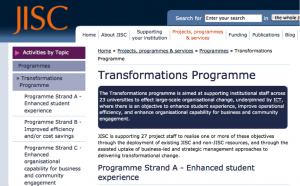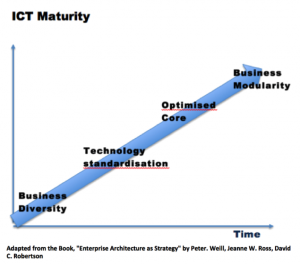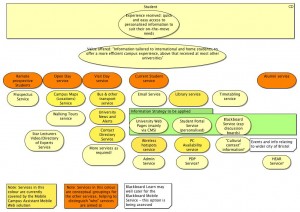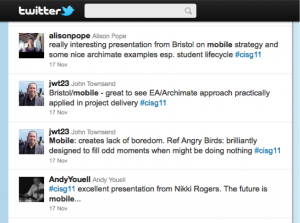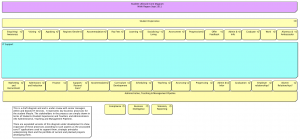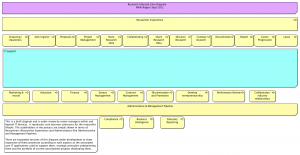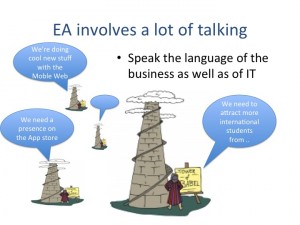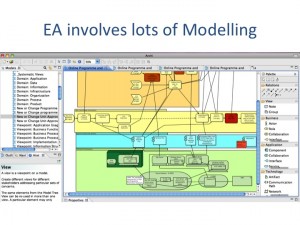A couple of months ago I blogged about our Mobile Strategy development here at the University https://enterprisearchitect.blogs.bristol.ac.uk/2011/11/18/our-mobile-strategy-at-bristol/. Since then, several conversations have taken place with the CMS project, the Student Portal service, and with the TEL advisors network, with a view to planning our next steps in line with both systems architecture plans and the new e-learning strategy in the coming months.
MyMobileBristol (MMB) is a pilot service – part of an iterative, tactical approach we’ve taken so far to exploring the role of University-provided access to information, tailored to a range of mobile devices (often devices that are personally owned by students – smartphones, tablets and so on). Behind MMB, there is at the middleware layer a Semantic Web based data aggregation service, developed by our R&D group (ILRT). This service successfully aggregates data in a very flexible and extensible way, integrating externally hosted data (such as Bristol City Council “Next Bus” transport info) as well as internal data (such as newsfeeds about University events or service status updates). It exposes the data it holds to consumer services via a RESTful interface meaning that this data becomes highly reusable, whether by smartphone apps, the Mobile Web or even the Student Portal. Bringing this content to the latter is now a priority. The Student portal concept is naturally correlated to the goals of MMB in that it is based on the principle of collecting together functionality and information that students need in a one stop location. It also permits personalization – for example personalized student timetables. Not surprisingly, these are the next big “want” from the student mobile user community, according to surveys and user engagement studies conducted by the MMB project last year.
Continuing dialogue is taking place across the organization, facilitated by my Enterprise Architect role. With the CMS project we have agreed that the Mobile Web as far as the University Web is concerned should be underpinned by using responsive design as far as we can (http://coding.smashingmagazine.com/2011/01/12/guidelines-for-responsive-web-design/) .
I also met with the SITS (Student record system software) suppliers, Tribal, this week to find out whether or not they are putting thought into how students may want to access course or fees and fines information using a range of mobile devices. We had a useful discussion about how we can collaborate in this area.
The more we can integrate our mobile solution across a range of applications and scenarios, the better. For example we need to link the MMB solution easily to the recently acquired Blackboard Mobile Learn application and also to Library resources. Conversations are still to take place with the UG and PG Customer Relationship Management projects (to discuss the mobile experience in relation to Hobson’s software used for CRM at Bristol).
So what are the next steps for mobile provision, which has so far been focused on the student experience at Bristol, for obvious strategic reasons? Well, prioritisation is the key. There are lots of things we could do next based on our assumptions about student needs or our desire to focus on institutional strategy or even our excitement about breaking technologies such as NFC (Near Field Communication)! But we want to get next steps as “right” as possible, given that managing, and hopefully fully meeting, student expectations, as we move from pilot to service will be essential. A really useful discussion tool is our student lifecycle diagram with a mobile information view filled in (see image). This gives a way to talk about precisely which strategies are the most key – impressing students during freshers week with funky campus orientation games using mobile device GPS features? or giving students better timetabling information and reminders about assignment deadlines? Or what?
This week I presented the student lifecycle view of options and discussed potential next steps in the area of mobile support with TELAN (Technology Enhanced Learning Advisers Network), previously eLAN. This approach to discussing priorities went down very well with the group. There are some interesting developments taking place in e-learning. Professor Nick Lieven, PVC (Education), has tasked the group with a mission to develop a new e-learning vision and strategy for the University by Easter 2012. The group would like me to convene a focus meeting with them in March to look in depth at what the Mobile Business Case should prioritise, together with a specially invited group of student representatives. Meanwhile the Student Portal service will be looking to upgrade to the latest version of uPortal and will conduct more user analysis, increasing our understanding of student requirements. We will also have the opportunity to analyse uMobile (from uPortal) to see how easily this new platform will help us to support the student mobile environment.


